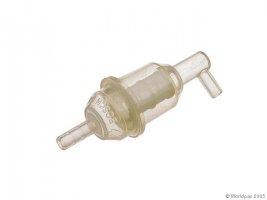Desiderata
Member II
My E-27 diesel (Yanmar YSB-8) stalled this weekend. We got it started again and to the dock but narrowly before stalling again. After 2 yrs of dry dock storage, it ran pretty well over the last 9mos. of our ownership, slightly throttling up and down, notwithstanding. Inquiries to the local cronies have drawn a miriad of suggested solutions.
1. Fuel polishing- For $180, a guy comes and "polishes" the fuel and cleans the tank with a longhosed machine. Nice.
2. "a 30yr old aluminum fuel tank? Are you crazy? Replace it!" chimes another. A new permanant marine grade polyethylene tank "impervious to salt, alkalis and weathering-will not rust or corrode-complete with new sending unit" (Tempo) for the same $180ish. My Ericson friend Randy R once told me he had to cut up his old tank to get it thru the lazzarette. Do-able, but Whew.
3. Certified Marine Max Mechanic "Does your tank currently leak?" No. "Well, then why are you spending all this money either way? Wheel your Shop-Vac & Sears compressor to the dock, take out the sending unit in the aluminum tank-dump some solvent in- then, using the Shop-Vac,suck all the inevitable gunk out the tank with a gizmo you fashion out of bendable copper tubing. Then, dry out the tank using the compressor, then vac again. New Racor and engine mounted fuel filters, fresh fuel and GO! (This is the current top contender) Anybody else out there have any ideas?
I bumped into a friend at the grocery store last nite who, while grimacing, asked me what new cologne I might be using. Smiling sheepishly, I said "Diesel"
1. Fuel polishing- For $180, a guy comes and "polishes" the fuel and cleans the tank with a longhosed machine. Nice.
2. "a 30yr old aluminum fuel tank? Are you crazy? Replace it!" chimes another. A new permanant marine grade polyethylene tank "impervious to salt, alkalis and weathering-will not rust or corrode-complete with new sending unit" (Tempo) for the same $180ish. My Ericson friend Randy R once told me he had to cut up his old tank to get it thru the lazzarette. Do-able, but Whew.
3. Certified Marine Max Mechanic "Does your tank currently leak?" No. "Well, then why are you spending all this money either way? Wheel your Shop-Vac & Sears compressor to the dock, take out the sending unit in the aluminum tank-dump some solvent in- then, using the Shop-Vac,suck all the inevitable gunk out the tank with a gizmo you fashion out of bendable copper tubing. Then, dry out the tank using the compressor, then vac again. New Racor and engine mounted fuel filters, fresh fuel and GO! (This is the current top contender) Anybody else out there have any ideas?
I bumped into a friend at the grocery store last nite who, while grimacing, asked me what new cologne I might be using. Smiling sheepishly, I said "Diesel"


